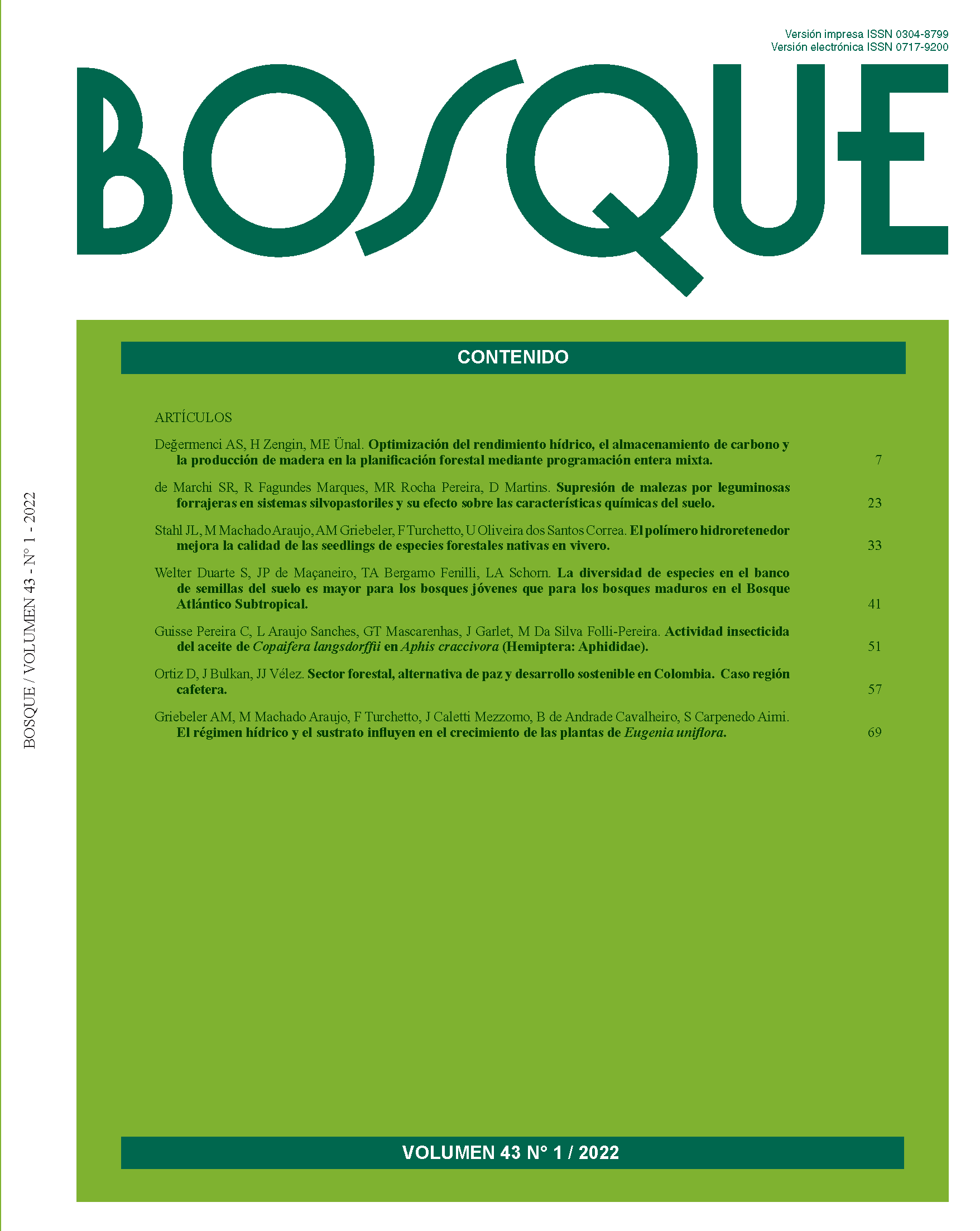Main Article Content
Jul 1, 2022
Abstract
The study focused on the potential role of the forest sector in Columbia’s post-conflict processes based on the multifunctionality of forests and their components: communities that live in and close to forests, economic dynamics, social actors and sectoral policies. The analysis covered the national level and the coffee region, located in the center of the country. Materials and methods included semi-structured interviews with international and national forest experts. Experts agreed that the forest sector in Colombia represents an alternative pathway for increasing employment and improving the quality of life of local populations, especially in those regions where the post-conflict process is still in effect. In the case of the coffee region, there is a reforestation potential of 54,500 ha and, with minor restrictions, the potential for 164,130 ha of forest plantations. Less than 10 % of that potential has been achieved. Likewise, there are opportunities to implement ecosystem services programs in public and private natural forests that cover 55 % of the coffee region. These potentials are not currently part of the regional priorities, although they could generate income and employment for vulnerable coffee-growing families and for indigenous communities living near natural forests, for whom poverty is a constant due to structural deprivations.


